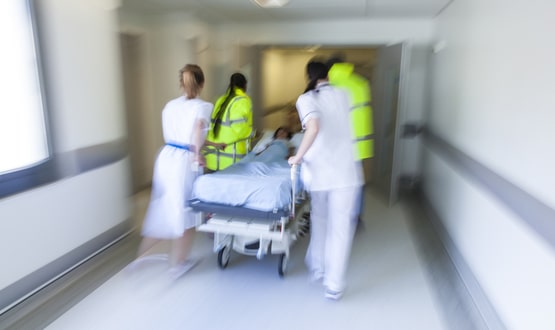NHS Digital’s programme manager for the Child Protection Information Service (CP-IS), Chris Elkington, discusses how the technology has protected children across the country and the plans to expand it, with North East Ambulance Sevice’s children safeguarding lead, Nichola Howard and Andrew Fellowes, associate head of policy at charity NSPCC.
The current pandemic has affected us all in so many different ways: the loss of loved ones, livelihoods and freedom to name a few. However, there are serious hidden impacts that aren’t as obvious on first glance.
The disruption of schooling this year has meant that many children have not been seen for long periods by teachers, school nurses and health visitors, leaving potential abuse to flourish away from concerned eyes.
This has meant that the need for CP-IS has never been greater. Launched four years ago, it provides a flag on the medical records for children and young people who are a Looked After Child or on a Child Protection Plan, for clinicians in urgent and emergency health care.
If any child on a plan attends somewhere like an A&E or walk in centre, the clinicians can see that they are vulnerable. They are given details of the child’s last 25 visits so that they can spot emerging patterns and contact details for the social worker in case they want to discuss the situation. The social care team is also alerted to the visit and both sides are joined up, so that children are better protected from potential abuse.
There are nearly 200,000 children on the system and regardless of where they live, if they are taken to any unscheduled healthcare setting in the country it will be noted, and the information shared. This has led to real benefits.
The groomed fifteen-year old who was taken to an A&E in the next county by her abuser who was subsequently arrested and charged, helping to break the cycle. The young child dangerously high on cannabis, diagnosed quickly and treated effectively before being taken into foster care. These children are anonymous but their stories are real.
Seeing the value
North East Ambulance Service’s Nichola Howard has seen the value of the flag for her trust’s staff first-hand.
“The CP-IS system is extremely valuable for both our frontline staff and those within our Emergency Operations Centre, allowing them to use their experience and clinical instincts to make the right call,” she says.
“In the middle of the first lockdown this year, we received a 999 call from someone, who put the phone down almost straight away. Our handler called back multiple times and, when they finally made contact, were told that the caller’s child had made the call by mistake.
“However, there was a flag indicating that the child in question was on a child protection plan so the handler dug deeper. The parent changed their story several times on the call, raising suspicions further and leading to an ambulance being dispatched to check on the welfare of the child.
“When they arrived at the house, the parent tried to claim that their child wasn’t there but, knowing that the child was on a protection plan and vulnerable, our responders entered the house with the support of police.
“They found the child upstairs with a bruised face and swelling to their head, visibly distressed. The child was transported to hospital for further assessment and subsequently taken into the care of social services, while their parent was arrested for child neglect. All this from one 90-second phone call, a call handler’s instincts and the knowledge that the child was vulnerable.
“CP-IS has been a valuable tool to help our practitioners to have a wider understanding of potential vulnerabilities of the children and young people they meet.
“Both the call handling team and paramedics who attended the address demonstrated excellent professional curiosity and used the CP-IS information to aid their clinical decision making, resulting in the protection of a vulnerable child.”
Keeping children safe
NSPCC campaigns to keep children safer. Their associate head of policy, Andrew Fellowes talks about the concerns that they have for children during this pandemic and how information sharing between health and care professionals is critical for child safety.
“During the pandemic, many children have lost access to access to wider support networks and contact with professionals has been limited,” he says.
“This can make it harder to maintain a complete picture of how children are coping and if they are at heightened risk.
“That’s why having a joined-up system that includes information sharing between health and care professionals can be crucial in keeping children safe. By helping clinicians on the frontline to have a better picture of a child’s circumstances, the Child Protection Information Service supports them to more accurately assess if a child is at risk and if they need to take further steps to ensure the child is safe”
There is more work to be done, to connect health and care more fully. We want to expand the net to cover all healthcare settings, allowing GPs, mental health professionals in CAMHS, school nurses and others to see and share the same information.
If a child is potentially at risk of abuse or neglect, we want the healthcare professionals treating them to know about it so they are able to make more informed clinical decisions.
If a child comes into contact anywhere in the health system, we want their social workers to know, so that they can marry this up with their personal knowledge of the child’s situation and spot potential problems before they become worse.
If you work in a health setting that doesn’t have CP-IS and want to know how to join, contact us on enquiries@digital.nhs.uk and we will work with you so you can extend this net of protection for the children in your care.

